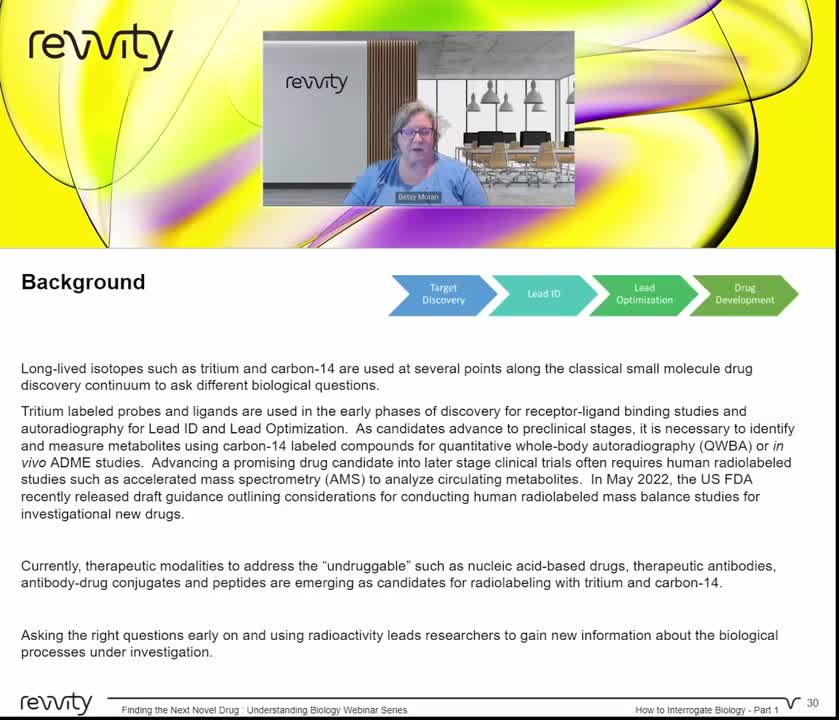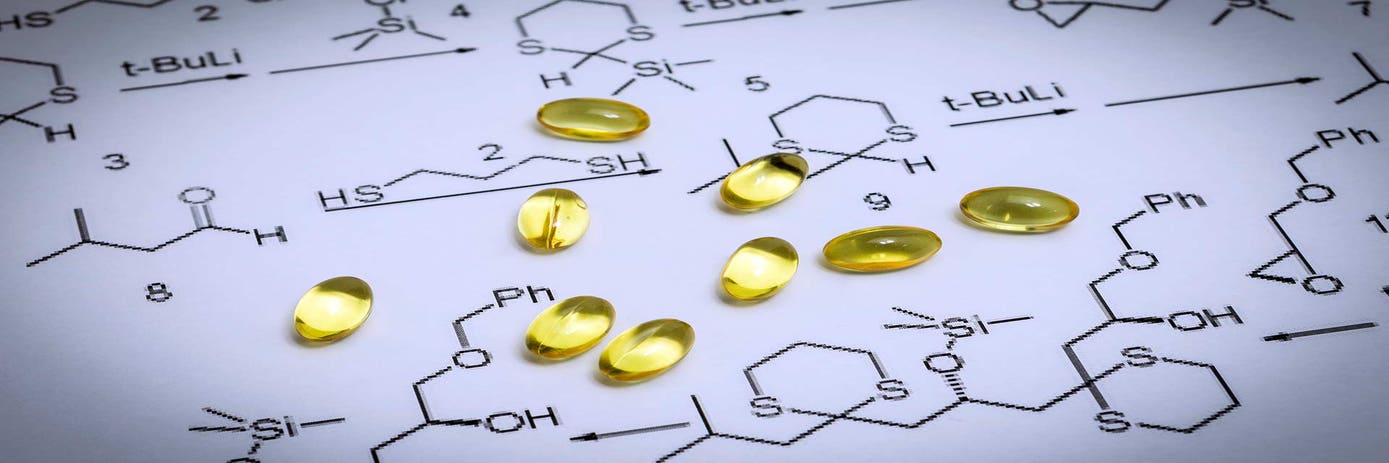
Radiometric detection is a well-established and highly effective method for molecular quantitation, leveraging the unique capabilities of radioactivity to gain insights into various biological processes. This approach is particularly useful in drug molecule research, where radiolabeling of small molecules remains one of the most common detection methods, playing a pivotal role in advancing new therapeutic modalities.
The use of long-lived isotopes, such as tritium (3H) and carbon-14 (14C), as facilitated critical biological inquiries throughout the classical small molecule drug discovery continuum. For example, tritium-labeled probes and ligands are used in the early phases of discovery, facilitating receptor-ligand binding studies and lead identification and optimization through autoradiography. Additionally, identifying and measuring metabolites using carbon-14 labeled compounds during preclinical studies such as quantitative whole-body autoradiography (QWBA) or in vivo absorption, distribution, metabolism, and excretion (ADME) studies, are necessary for candidates to advance to the next phases of drug development.
This well-established approach has recently extended to therapeutic modalities for addressing the “undruggable”, such as nucleic acid-based drugs, therapeutic antibodies, antibody-drug conjugates, and peptides. This opens doors to the development of advanced treatments for previously challenging diseases, such as cancers, viral infections, and genetic disorders, by targeting previously inaccessible molecules.
Crucial insights in early drug development
Human radiolabeled drug candidate studies constitute a crucial component of drug development. These studies involve the use of radioactive isotopes to trace and monitor the behavior of a drug within the human body. They are often conducted during the early stages of drug development to gather crucial information about the drug's pharmacokinetics, metabolism, and distribution in humans.
Information collected from radiolabeled studies can influence the design of subsequent clinical trials by providing insights into appropriate dosing regimens, potential drug interactions, and safety considerations. Regulatory authorities have recognized the significance of such data, and often require its inclusion in drug approval processes. This information supports the submission of documentation regarding the drug's behavior in humans.

Radiometric solutions
Even in the evolving landscape of drug discovery and development, radiometric detection remains the gold standard used by researchers in many scientific applications.
Learn more about Revvity’s radiometric solutions, which offer unparalleled sensitivity and performance to help streamline workflows from discovery through development. Off-the-shelf products, or custom radiochemicals, and other reagents and consumables alongside instrumentation are available for a wide variety of applications.


































